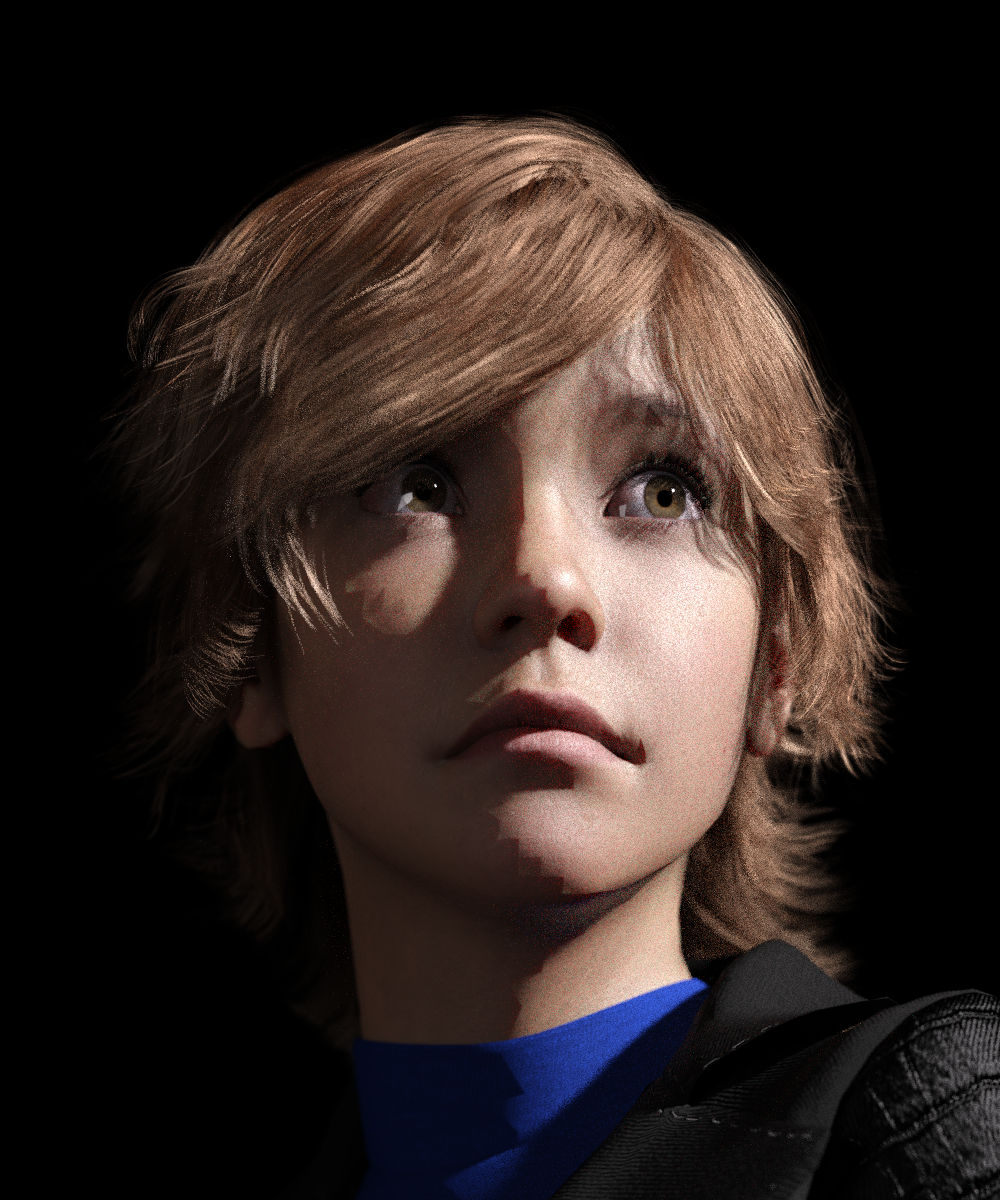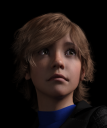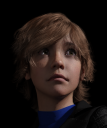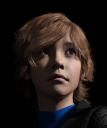Spectral Rendering and Light Strength
Did some experiments with the amount of light needed to render in spectral mode (Natural at cie1964), and I thought I'd share my findings. I set bluejaunte's Amira at base resolution to render quicker, so ignore the ugly quads on her face. All the images have one dim, wide fill light to the left and a key light to the right. Only the key light and the spectral rendering toggle was changed. The images were set to render for 1,000 samples apiece.
Tonemapper
- Shutter Speed: 45.0
- F-Stop: 16.0
- Film ISO: 800
Fill Light
- Spread Angle: 90.0
- Beam Exponent: 1.0
- Light Geometry: Rectangle
- Height: 108.0
- Width: 48.0
- Luminous Flux: 7,500
Key Light 01
- Spread Angle: 60.0
- Beam Exponent: 4.0
- Light Geometry: Rectangle
- Height: 108.0
- Width: 48.0
- Luminous Flux: 15,000

No spectral rendering, default light angle. Her skin has a noticable pink/orange tone to it, too much saturation for a film noir-ish image. The shadows are too soft as well.
Key Light 02
- Spread Angle: 15.0
- Beam Exponent: 32.0
- Light Geometry: Rectangle
- Height: 108.0
- Width: 48.0
- Luminous Flux: 15,000

No spectral rendering, narrowed the spread angle and upped the beam exponent to sharpen the shadows. Despite the better shadows, the image is much, much noisier due to the concentration of light rays.

This is a variation with the lumens turned down to 5,000 to try and offset the noise. It didn't work. It's still just as noisy, but now it's dark and noisy.
Key Light 03
- Spread Angle: 60.0
- Beam Exponent: 4.0
- Light Geometry: Rectangle
- Height: 108.0
- Width: 48.0
- Luminous Flux: 150,000

Spectral rendering enabled, same settings as Key Light 01 except the lumens have been increased tenfold to account for the increased light range. Her skin is paler and less saturated, but since that's exactly what I want I'm fine with it.
Key Light 04
- Spread Angle: 15.0
- Beam Exponent: 32.0
- Light Geometry: Rectangle
- Height: 108.0
- Width: 48.0
- Luminous Flux: 1,500,000

Spectral rendering on, same settings as key light 02 but the lumens increased one hundredfold. A tight angle and a high exponent are where spectral rendering really shines-- pun intended. Her skin has the nice desaturated look from 03 and the hard shadows from 02, but the ugly noise that made 02 unusable is almost gone. It's still there if you squint, but this was only rendered to 1,000 samples.
Conclusions
Spread Angle and Beam Exponent, two important controls for shaping light in Iray, are pretty much unusable without spectral rendering due to the noise they introduce. Broading the color space with spectral mode allows you to get better desaturated skin tones and nice sharp shadows, but you need to boost your key light by at least 100x. Probably a little more, since 04 still isn't as bright as 02. Spectral mode doesn't seem to affect wide angled lights with low exponents--despite staying at 7,500 lumens the whole time, the fill light (90 deg., 1 exp.) barely changed, whereas toggling spectral rendering turned a concentrated spotlight (15 deg, 32 exp.) from overblown to pitch black. There's also a bug in spectral rendering that makes UV seams visible on some models, which further cripples this very useful tool, but since this image doesn't have any seams visible it didn't matter here.
If anybody has any insight into the exact lumens adjustment ratio between normal and spectral mode, I'd be interested to hear it.












Comments
I'm not sure whether this is still live but I've noticed that virtually all Daz lights are ineffective now in spectral but emmisive surfaces still work normally.
The default rendering mode in DAZ is faithful, not natural. That's the source of your problem. Simpler examples help, I used Predatron's excellent Light Probes, I think it's this product, but don't quote me. I used a single DAZ spotlight, basically defaults but I turned off the beam exponent because that just confuses things and I futzed the spread angle to light the probes (hint: swap the viewport to the light you want to focus, select the light; you will see it's spread).
I also changed the render to completely converge (max time 0, max samples -1, covergence 100%) but left the "quality" at 1; this helps avoid spurious unexpected noise in tests. I then created a slightly off-light camera (turning the headlight off) and set the render settings to scene-only (the dome was Ruins, but the Ruins below come from Predatron; they are set as the base color of the last ball, the first is a mirror.) I left tone mapping on (which can be misleading) but burn highlights, crush blacks are 0 and burn highlights per component, which leads to unexpected color casts in brighter areas, is off. Then rendering at arond EV9 (to correctly expose for the SpotLight, which has the defauilt 1500 lumens), and then with Spectral Rendering turned on (NO other changes) and then with CIE1964 (which IRC increases the number of channels) and finally with Natural (with CIE 1931), the only one I had to adjust the EV (significantly, or maybe at all) was for was the last:
Well, maybe this is a load of balls but in the first three cases the EV was 9 pr 10 (I always use the DAZ default ISO - it's just too confusing and somewhat meaningless to change it). In the final case the EV was -8. Rendering times and iterations are as follows (in order):
The last image is slightly darker (underexposed), that may explain the reduced reduced iteration. It's not clear to me why DAZ (or more likely Iray) is rendering the base for "natural" as -8 however natural rendering clearly requires the use of absolute light levels (if the word "natural" has its normal English meaning). Exactly how "natural" maps into the CIE rendering intents is also unclear to me; Iray probably document it.